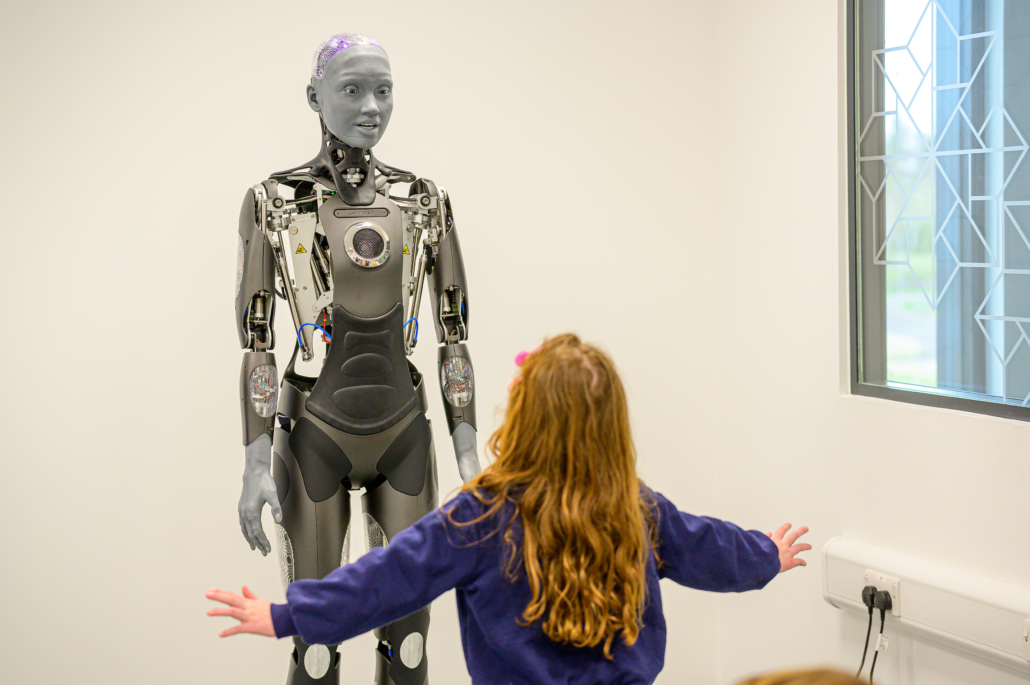Caroline Bellamy reveals why collaboration – with both public and private institutions – is the watchword
Ordnance Survey works with tech giants such as BT and Cisco on the CityVerve project in Manchester Credit: PA
The new chief data officer of Ordnance Survey (OS) has prioritised collaboration with both public and private sector organisations.
Caroline Bellamy joined Great Britain’s national mapping agency last month, following a 27-year career in the private sector that most recently saw her employed as director of business intelligence at Vodafone. Bellamy told PublicTechnology that continuing to engage with commercial organisations will be a key part of Ordnance Survey’s work.
“I do not want to see Google running the country – but that doesn’t mean I do not want to take advantage of the innovation they can bring,” she said. “Are we able to access some of the developments of the commercial sector?”
Bellamy added: “Let’s be a good customer – the more you give, the more you get back. When you try and keep everything secret, you play a high-stakes game. But, when you collaborate, you reap the rewards. The question is: What are the outcomes that we want? And what do we want from them – not what do they want to sell us.”
Related content
- Ordnance Survey releases database of every green space in England, Scotland, and Wales
- Ordnance Survey to develop ‘digital twin’ of UK for national rollout of 5G
- Planning apps ‘stymied by Ordnance Survey open data rules’
The data chief picked out two OS-backed initiatives that serve as exemplars of how private and public institutions can work together.
The first is OS’s Geovation Hub in London, and the incubator scheme that is run from the facility. The mapping agency operates a programme for start-ups focused on property or location technology, in which companies can receive backing of as much as £10,000 and up to six months of mentoring, as well as access to Ordnance Survey data.
Firms that create a successful prototype product by the end of this process will be eligible to take part in a second six-month programme. Another £10,000 tranche of funding is invested during this stage, and businesses taking part in the scheme will also receive help in seeking longer-term financial backing, as well further business mentoring.
A variety of private sector entities – including IBM and KPMG – collaborate with OS on the Geovation project.
The second example cited by Bellamy was the CityVerve project in Manchester. The scheme – which was the recipient of a £10m government prize in 2015 – brings together 21 organisations with the aim of creating “a blueprint for smart cities worldwide”.
Included in the programme are the likes of technology giants Cisco, Siemens and BT, as well as smaller IT firms such as virtual reality specialist Clicks + Links and content aggregator CollectivWorks. Ordnance Survey is one of a number of public sector organisations also taking part, alongside Manchester City Council, Central Manchester University Hospitals NHS Foundation Trust, and both of the city’s universities.
We do not want to release things that are wrong, but we also have to be grown-up enough to say we do not have all the answers
“That is a tremendous example where, with data and information, we enable and support government,” Bellamy said.
‘We have to be grown up’
The chief data officer added that OS is also intent on collaborating better with the government departments and other public sector institutions that rely on the mapping agency’s data.
“It is about engaging… it is about what each government department is there to do, and how do we open up our data effectively and share it [to support them]. We have been open data for 10 years. We launch products in an open sense – and we are committed to that agenda.”
 She added that OS is determined to work more closely with other data- and research-led public institutions. But that it is also committed to ensuring it does so in a cost-effective way.
She added that OS is determined to work more closely with other data- and research-led public institutions. But that it is also committed to ensuring it does so in a cost-effective way.
“We do not want to release things that are wrong, but we also have to be grown-up enough to say we do not have all the answers – maybe collaboration is the way forward,” Bellamy (pictured left) said. “But – with my private sector head on – it should not be at a cost of £50m and a lot of new technology.
She added: “We are really engaging with the likes of the Office for National Statistics, and the National Oceanography Centre. But we must ask: how do we keep the cost down? There are also learnings we can take from the private sector, [in that regard]. I bring some of those we learnings with me – but I am not here to change the way we work.”
Look out in the coming days for an in-depth piece on how Ordnance Survey is using investing in technology such as 3D mapping and augmented reality.



